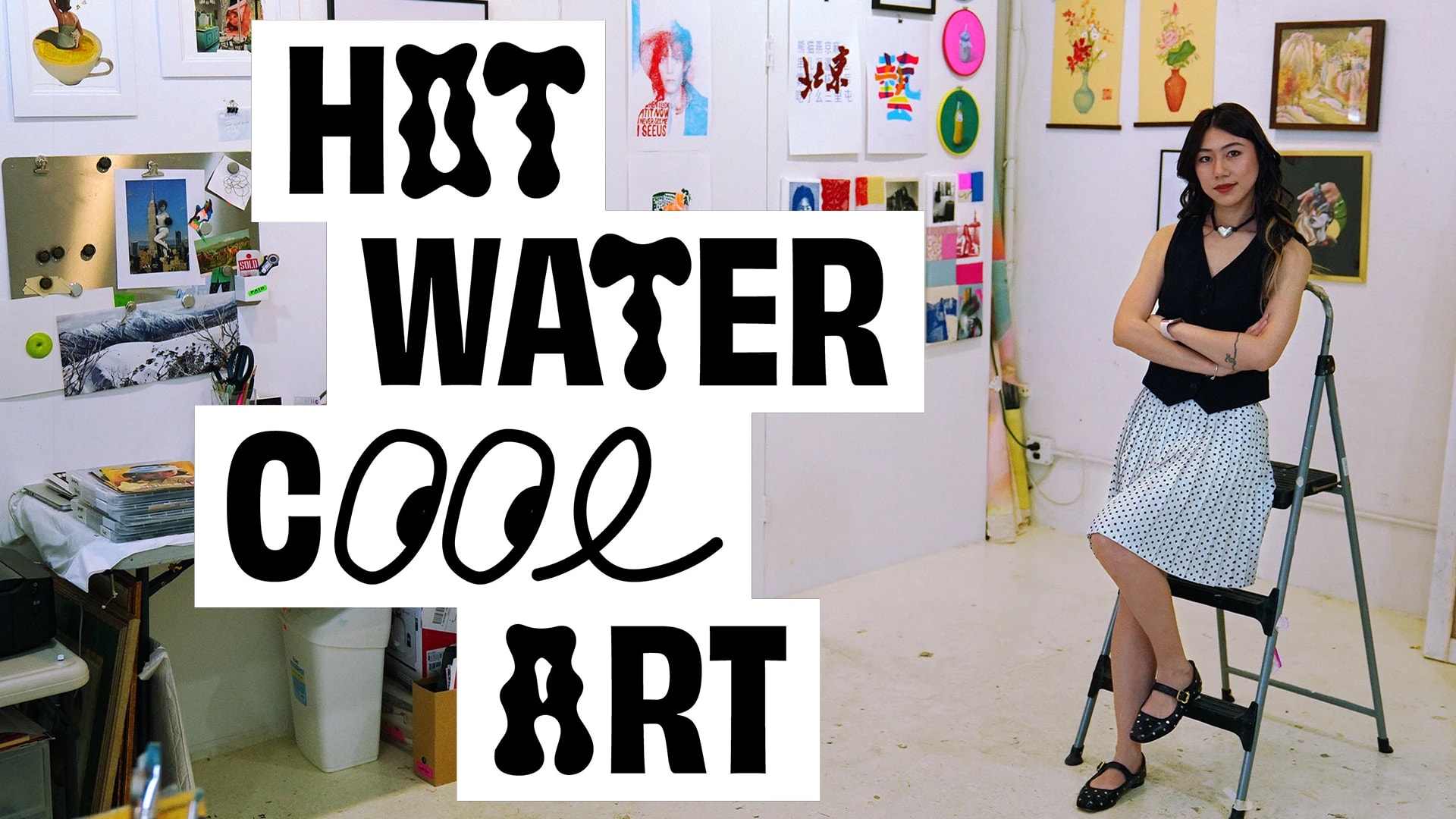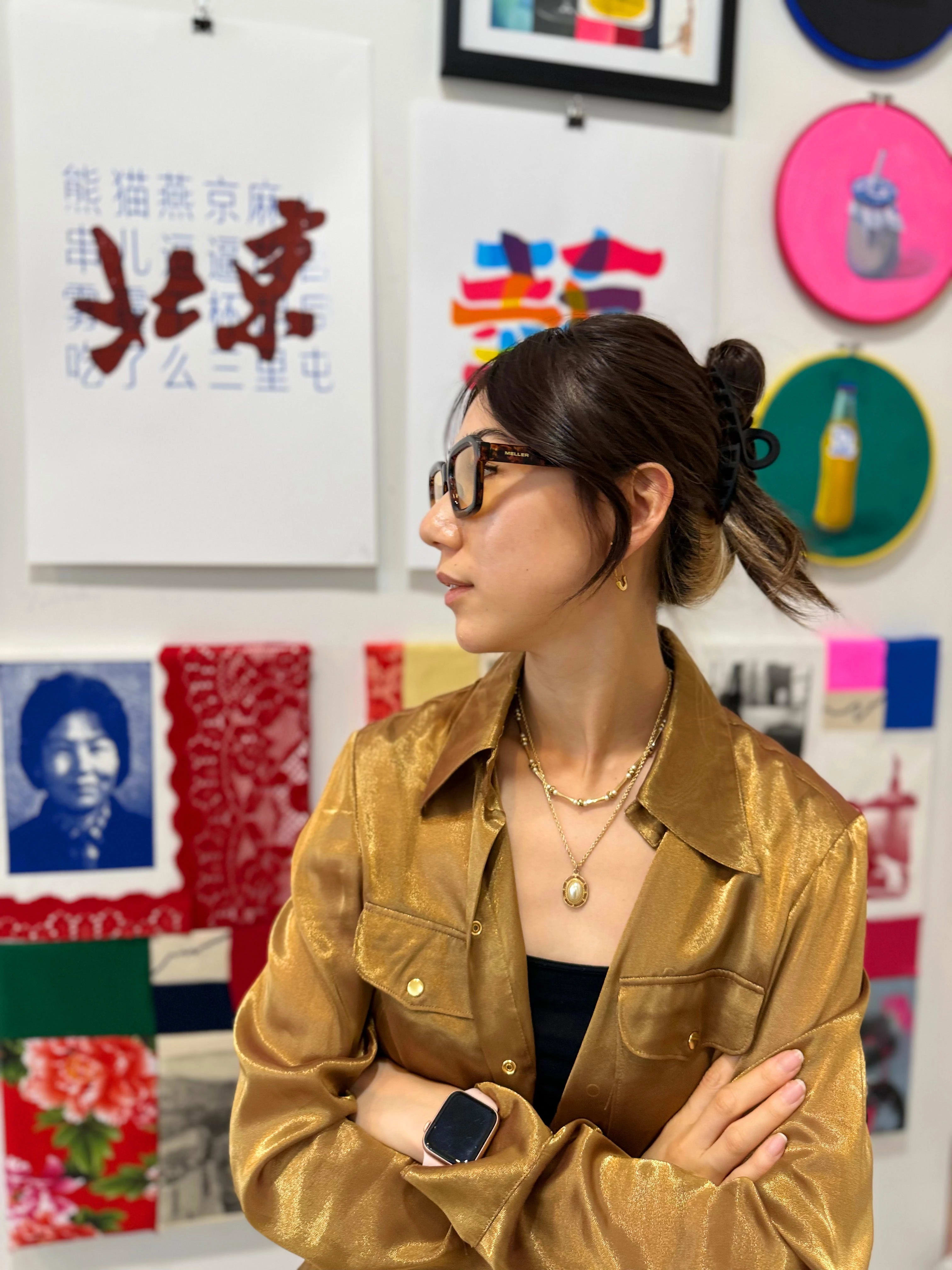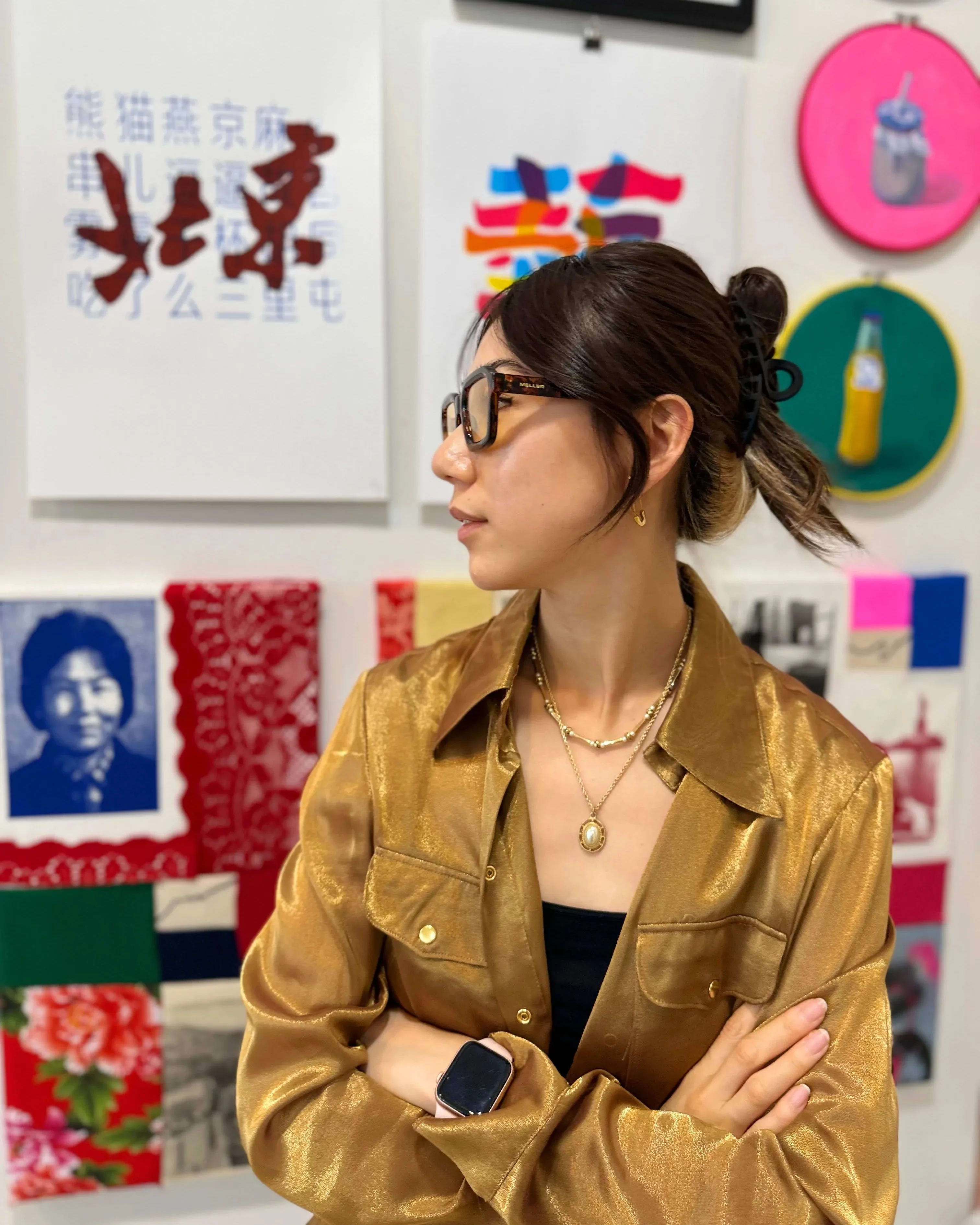The MFA Computer Art graduate also works as a motion graphics designer for Bloomberg and others.
An Emmy-nominated, Beijing-born, New York-based multimedia motion graphics designer and art director, Lulu Jiang (MFA 2016 Computer Art) has carved out a dynamic career for herself ever since graduating from the School of Visual Arts. Having worked in a variety of positions in digital media, she’s created content for Bloomberg (where she works now as a senior motion designer), NBC News, Hearst Digital, and Amazon Web Services; provided art directions on different shows on CNN+; and freelanced for the Webby Award-winning YouTube channel Vsauce.
Her latest project is Hot Water Cool Art, an art show launched this past summer on Instagram. Aiming to be a community for all art lovers, Hot Water Cool Art is a collection of interviews, studio visits, exhibition news, and valuable lessons learned by those working in the industry.
Jiang recently took some time to talk about the show, her experience at SVA, and more.
What inspired you to start Hot Water Cool Art?
I moved to New York City from Beijing in 2014 to get my master’s degree at SVA. Since then, I have been going to exhibition openings every Thursday. I enjoy talking to artists and people in the art world and hearing their unique stories. Two years ago, I moved into an art studio in Chelsea and started spending time with many artists. I realized that artists often work in isolation, focusing on creating art, but need help to gain exposure and stay relevant in the art world.
I’m both an artist and an art collector, but I would be broke if I bought from every artist I like, so maybe I can offer them something else instead: exposure. Having worked in the news and media industry for five years as a motion designer/producer, I understand the power of storytelling and what it takes to make a compelling video. Hopefully, this will bring some exposure to more artists. That’s why Hot Water Cool Art was born.
What do you enjoy most about interviewing artists?
I enjoy listening to their stories, but most importantly, I love learning how their personal stories connect to their art. Before interviewing the artists, I look at their websites, read their bios and artist statements, and explore their unique cultural influences. I’m more interested in their art’s “whys and hows” than how it looks.
People often say, “Follow your curiosity.” To me, every interview is a learning opportunity—a chance to learn about culture, history, or maybe just how to clean your brush. I’ve also gained some precious friendships over the years. Art is a beautiful, boundaryless language. Through art, I can connect with people outside my regular circle and age group, letting our imaginations lead.
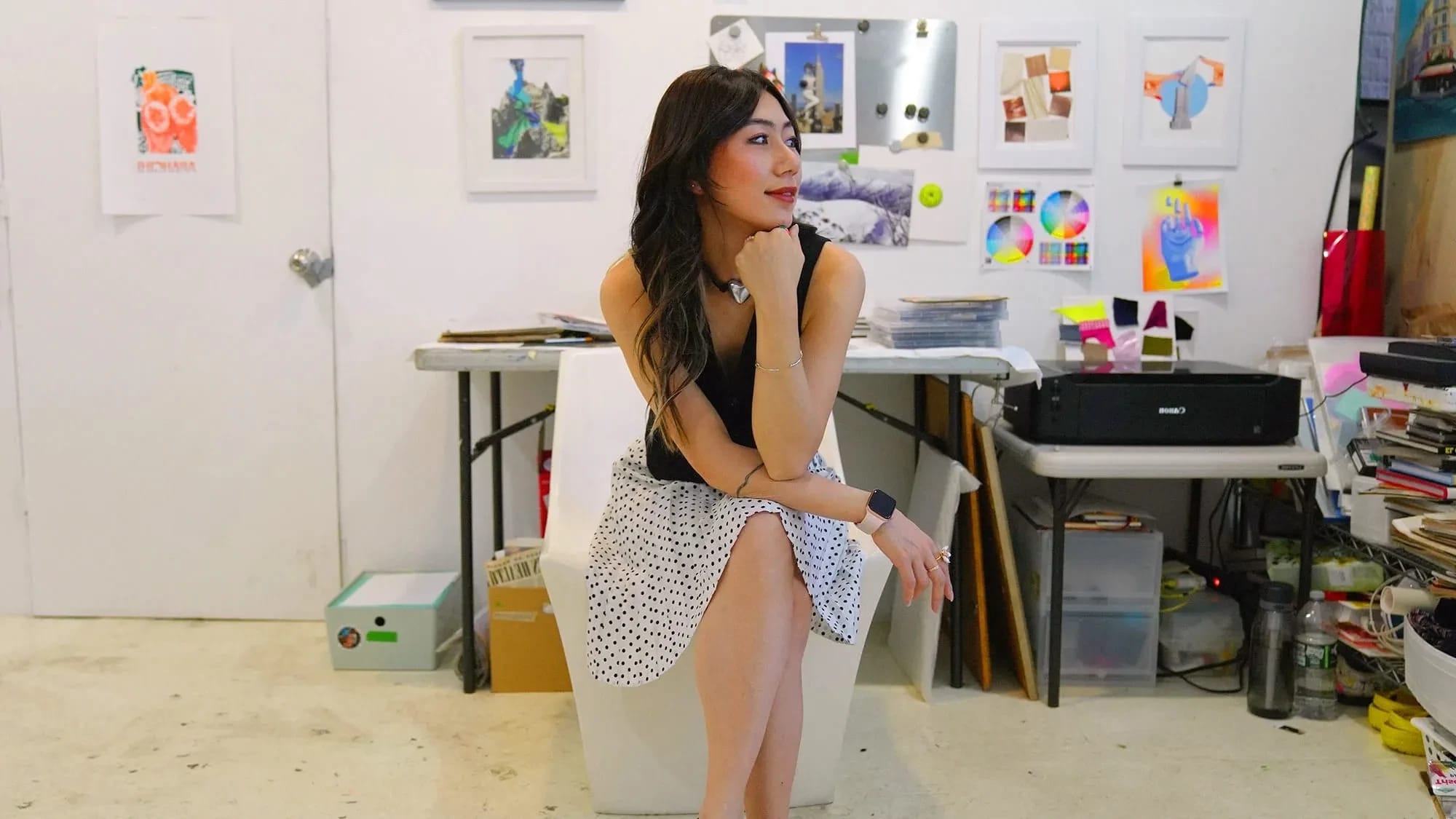
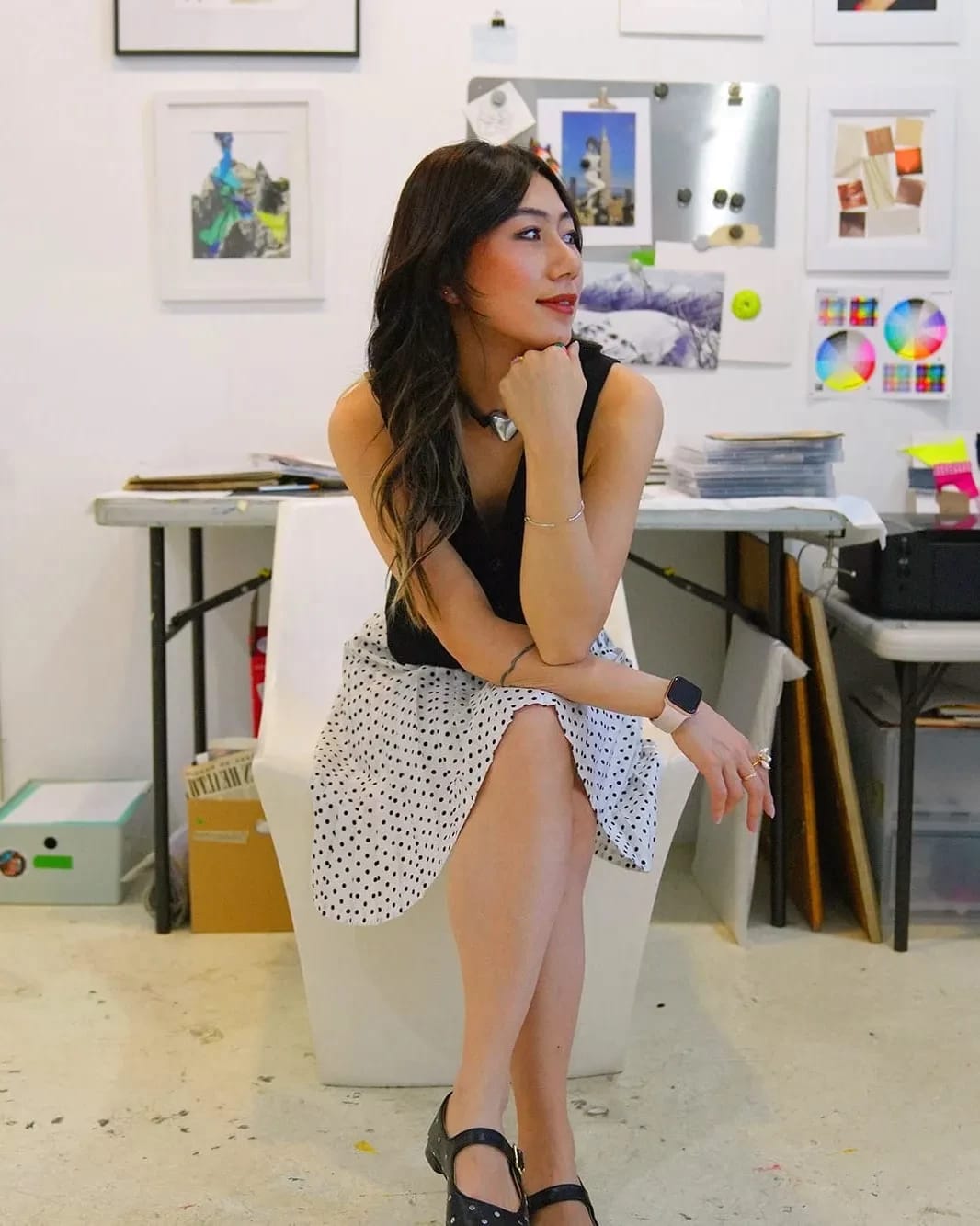
Lulu Jiang (MFA 2016 Computer Art) in her studio.
Lulu Jiang (MFA 2016 Computer Art) in her studio.
Where did you come up with the name?
There’s a double meaning for Hot Water Cool Art. Initially, I wanted to create content based on cultural differences. I’m Chinese, and when Chinese people go to a restaurant, they order hot water instead of cold water. Especially the older generation, like my mom, would always ask for hot water, even in the summer. Also, I like that it sounds simple and catchy—hot versus cool.
But then there is a second meaning. When I was brainstorming the name with some SVA faculty, they said the idiom “be in hot water” meant to put somebody in a difficult situation. I thought it was brilliant because I’m a very straightforward person, so when I do interviews . . . I want to be able to ask difficult questions and get very unfiltered and authentic answers.
Who has been your best guest so far, and who else are you hoping to get?
It’s a difficult choice. I mean, everybody! Everybody’s been great, very cooperative, and very passionate about this. I’ve interviewed artists, curators, and art fair founders. I appreciate all the help and all the resources I have.
Who else am I hoping to get? I want to interview a diverse range of artists in terms of nationality, cultural background, and practice in different types of art mediums. So far, I’ve had painters, ceramic artists, curators, cartoonists, and, in the future, photographers, sculptors, and even welding artists.
You graduated from MFA Computer Arts. How does that background apply to your interview show, if at all?
Yeah, that’s a good question. I studied Computer Arts and am currently a motion designer and multimedia designer. My work is mainly digital art, but I’ve become very fascinated by and inspired by fine artists. During my time at SVA, I learned the essential tools and technology so I can edit these videos and make graphics very compellingly.
Currently, Hot Water Cool Art is just a one-woman team. So it’s basically me doing everything! From writing the script and hosting the show to post-production and marketing, I would love some help scaling the platform and reaching more people in the art world, so please reach out if you’d like to join this journey.
What did you learn overall from your experience at SVA?
SVA was a very different experience from the BFA in animation I earned in China. I’ve never worked this hard in my life, and I’ve never learned so much in two years.
It was a great experience overall. Computer arts are very practical, and they are needed now, in 2024. All the teachers and faculty are very resourceful and challenging, too. However, this is beneficial because they want you to learn as much as possible. I had a lot of homework to do, but looking back, after I graduated, it was all totally worth it.
My thesis short film has won more than 20 awards internationally. Overall, I would never be where I am as a digital artist without going to SVA because I gained the necessary technical skills and valuable connections and resources during my time there.
For more Hot Water Cool Art, follow Jiang (@lulusdaily) and the show (@hotwatercoolart) on Instagram.


